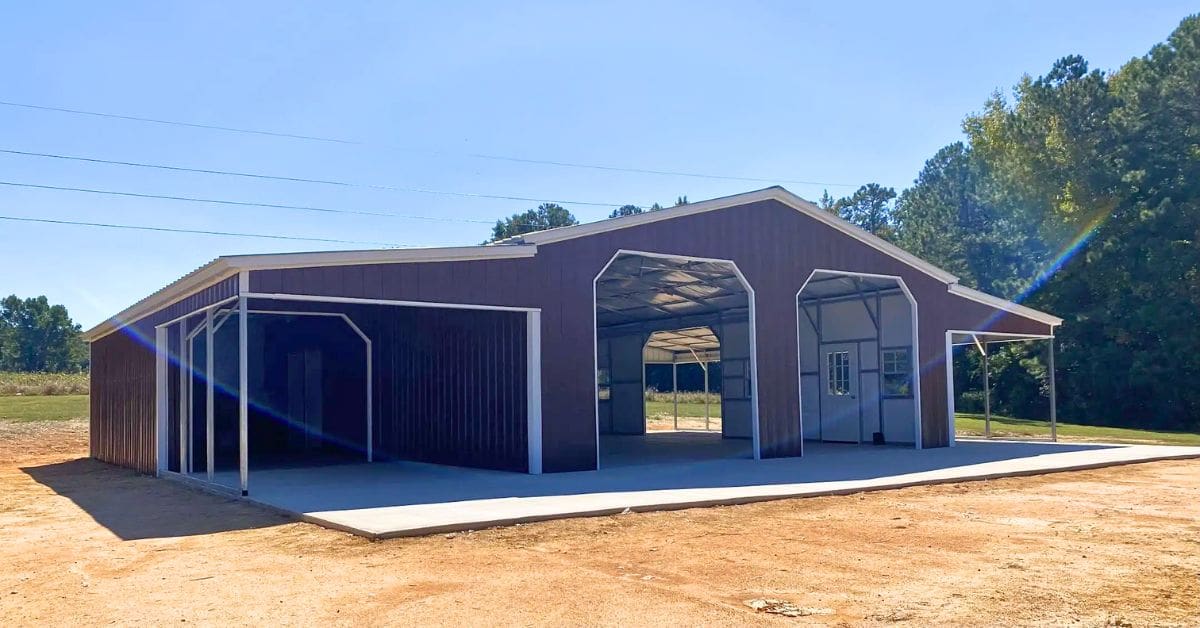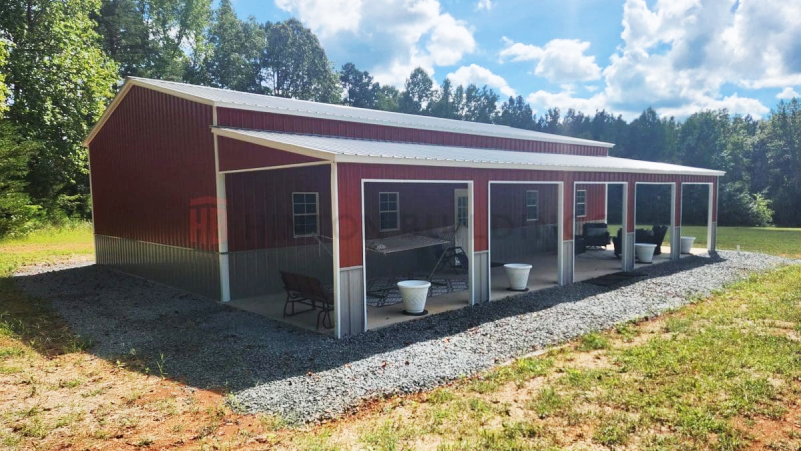
Metal buildings have been an integral part of construction for much of human civilization. Their durability, versatility, and cost-effectiveness ensure they continue to be a popular choice for modern applications, from skyscrapers to residential homes. Explore the milestones that have shaped the way we build in this brief history and evolution of metal buildings, from their early origins to future trends.
The story of metal buildings starts in ancient civilizations. The Egyptians, Greeks, and Romans used metals such as bronze and iron to create tools, weapons, and even structural elements. However, it wasn’t until the Industrial Revolution in the 18th century that metal began to be significant to construction projects. The invention of the steam engine and advancements in metallurgy allowed for the mass production of iron and steel. This period saw the rise of iron bridges and railway stations, signaling the dawn of metal buildings.
The use of cast iron and wrought iron became widespread by the mid-19th century. Landmarks, such as the Crystal Palace in London and the Eiffel Tower in Paris, showcased the potential of metal in architecture. These early structures were not only engineering marvels but also symbols of progress and innovation.
The transition from iron to steel in the late 19th and early 20th centuries marked a turning point. Steel, being stronger and more flexible than iron, opened up new possibilities for architects and engineers. The era of skyscrapers began with the construction of iconic buildings, such as the Home Insurance Building in Chicago. Many consider it to be the world’s first skyscraper.
The development of new metals and alloys has been crucial in the evolution of metal buildings. Early on, cast iron and wrought iron were the primary materials used. While durable, they had limitations in terms of strength and flexibility. The introduction of steel, an alloy of iron and carbon, revolutionized construction.
Steel’s high tensile strength and flexibility made it ideal for building tall structures and long-span bridges. Advances in metallurgy led to the creation of high-strength, low-alloy steels, which provided even greater performance and durability. These materials made metal buildings more resilient to environmental factors and extended their lifespan.
Aluminum is another metal that has had a significant impact. Its lightweight and corrosion-resistant properties make it suitable for various applications, from roofing to curtain walls. The aerospace industry initially drove aluminum’s development, but the construction industry soon recognized its benefits.

Technology has been pivotal in shaping the metal buildings of today. Computer-aided design (CAD) and building information modeling (BIM) have transformed the way architects and engineers approach design. These tools allow for precise planning, reducing errors, and improving efficiency.
Fabrication processes have also seen significant advancements. Automation and robotic welding have increased the speed and accuracy of steel fabrication. Prefabrication, where manufacturers build components off-site and assemble them on-site, has become a standard practice. This method reduces construction time and minimizes disruptions at the construction site.
The construction process itself has benefited from innovations such as 3D printing and modular construction. 3D printing enables the creation of complex metal components with high precision, while modular construction involves assembling pre-made sections to form complete buildings. These techniques offer new possibilities for design and construction, pushing the boundaries of what is achievable with metal buildings.
The focus has shifted toward sustainability in recent years. The use of recycled metals and the development of green alloys are becoming more prevalent. These advancements reduce the environmental impact and enhance the performance and longevity of metal buildings. Their durability means they require less maintenance and have a longer lifespan compared to traditional materials, translating to cost savings over time.
Metal buildings are highly recyclable from an environmental perspective. For example, you can recycle steel multiple times without losing its properties. This recyclability reduces the need for raw materials and minimizes waste. Furthermore, the use of recycled metals in construction lowers the carbon footprint of metal buildings.
Energy efficiency is another advantage. Metal roofs with reflective coatings can reduce cooling costs by reflecting sunlight. Insulated metal panels provide excellent thermal performance, contributing to lower heating and cooling expenses. These features make metal buildings a sustainable choice for both residential and commercial applications.

Throughout history, several metal buildings have stood out for their architectural significance and engineering prowess. Here are a few notable examples:
We’re likely to see even more impressive constructions to come as the sector continues to innovate.
This brief account of construction history and the evolution of metal buildings is a testament to human ingenuity and the relentless pursuit of progress. Metal is and was crucial in shaping our built environment, from ancient civilizations to modern skyscrapers. The advancements in materials, technology, and sustainability have made metal buildings more versatile, durable, and eco-friendly than ever before.
The potential of metal buildings continues to grow as we look to the future. With ongoing advancements and a focus on sustainability, metal buildings will remain at the forefront of construction innovation. Understanding the evolution of metal buildings provides valuable insights into the future of construction, whether you’re an architect, engineer, or simply someone interested in the built environment.
Hinton Buildings is here to ensure you get the best quality product possible if you’re looking for custom portable buildings that meet the design aesthetics you desire. We’ll help you build the structure of your dreams. Contact our team of experts today if you want to get more out of your next project. Together, we can build a future that is both innovative and sustainable.
